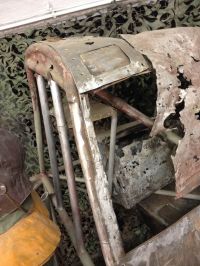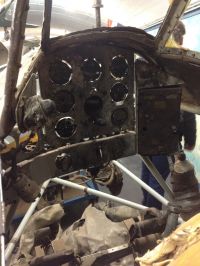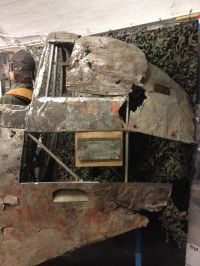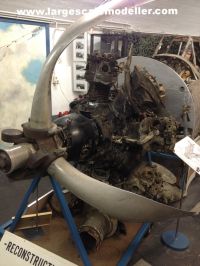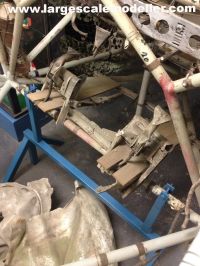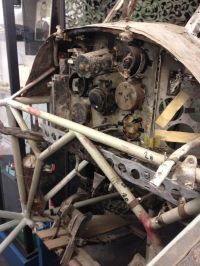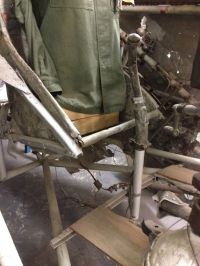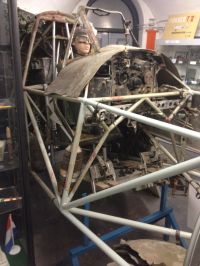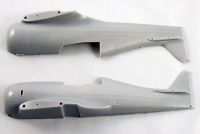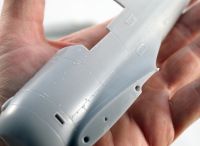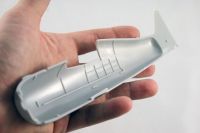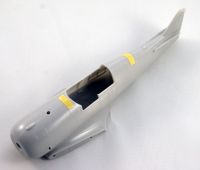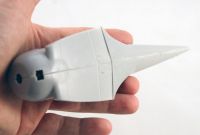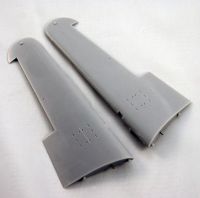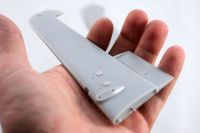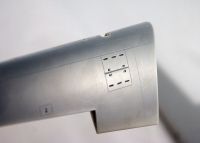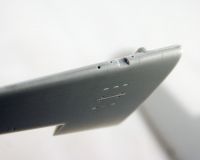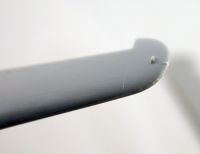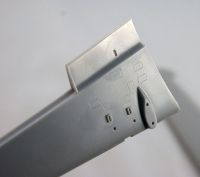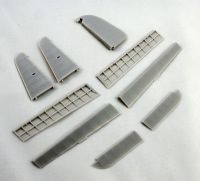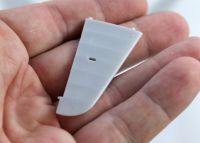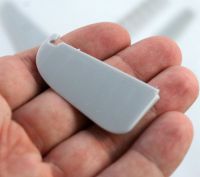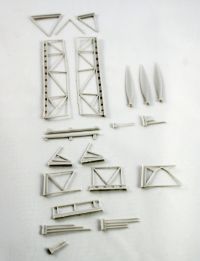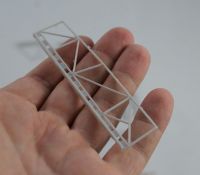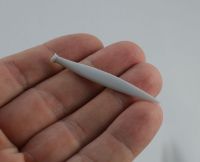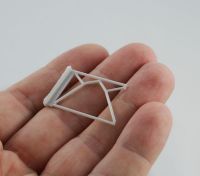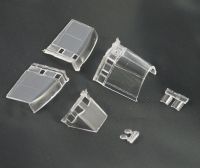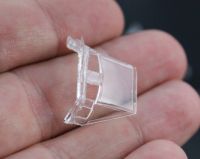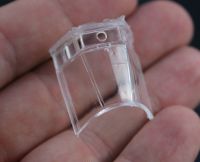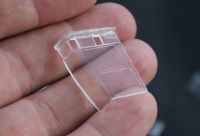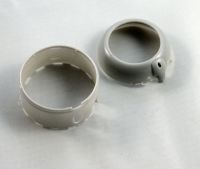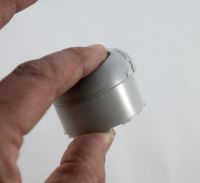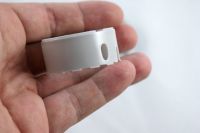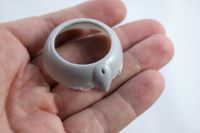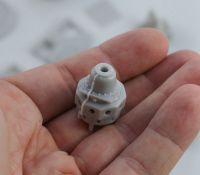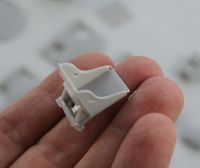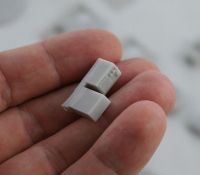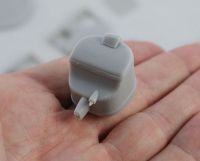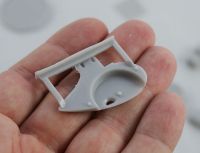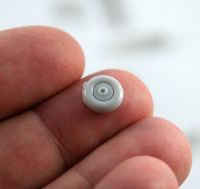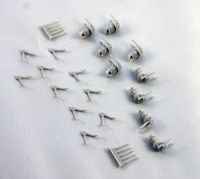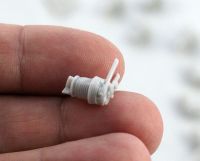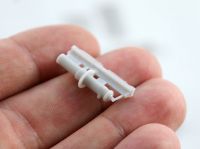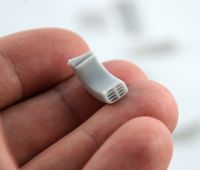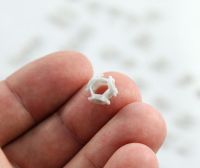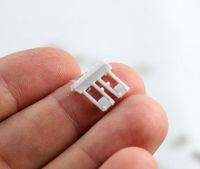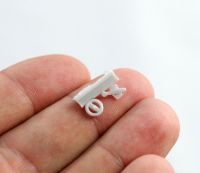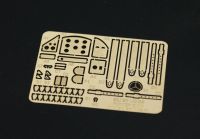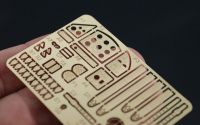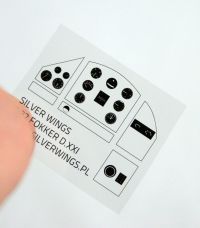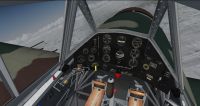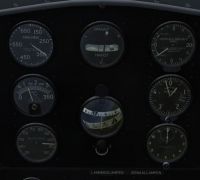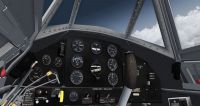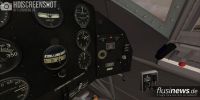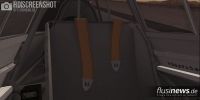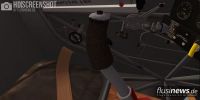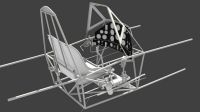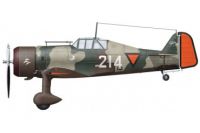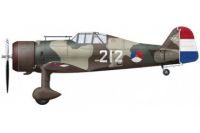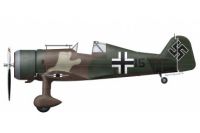Silver Wings | #32-017: 1/32 Fokker D. XXI
Reviewed by Jeroen Peters
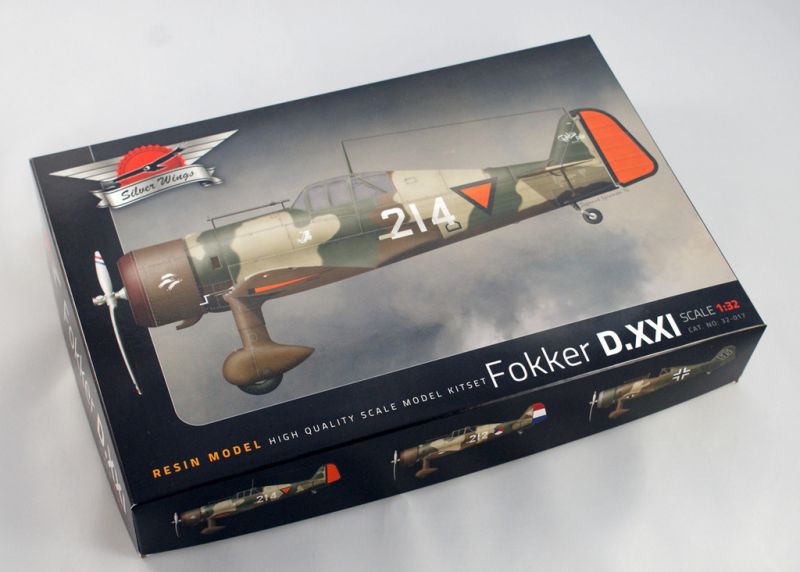
Introduction
Let me start this review by addressing the fact that:
- I am Dutch
- My grandfather built the Fokker D.XXI before and during the war
- I have a soft spot for this plane
- My name is mentioned in the instruction booklet in this kit
Taking the above into account, you might be inclined to think that I am somewhat biased and will praise it into the sky. Well… Maybe, but only if it deserves the credit. I never expected any company to tackle the Fokker D.XXI in large scale. Yes, we have seen it produced in 1/48 (Classic Airframes and Special Hobby) and in 1/72 scale (Kora, Special Hobby, Czech master and MPM), but for a large scale version we had to resort to the I.D. Models vacform release. I’ve seen one or two built, but never had the guts to try my hands at one myself. Most of the above releases in smaller scale feature the Finnish version of the Fokker DXXI. License built planes that often feature ski’s, different wheels legs, canopy, etc… When I first discovered Silver Wings was planning this release I asked them to please consider the earlier dutch version, since it’s not getting the attention it deserves. Since it flew in Dutch and German (beute) colours. Since it’s the original version, and thus the place to start. But more about this later…
With that out of the way, let’s first discuss the subject at hand, since it’s not a well-known or documented design.
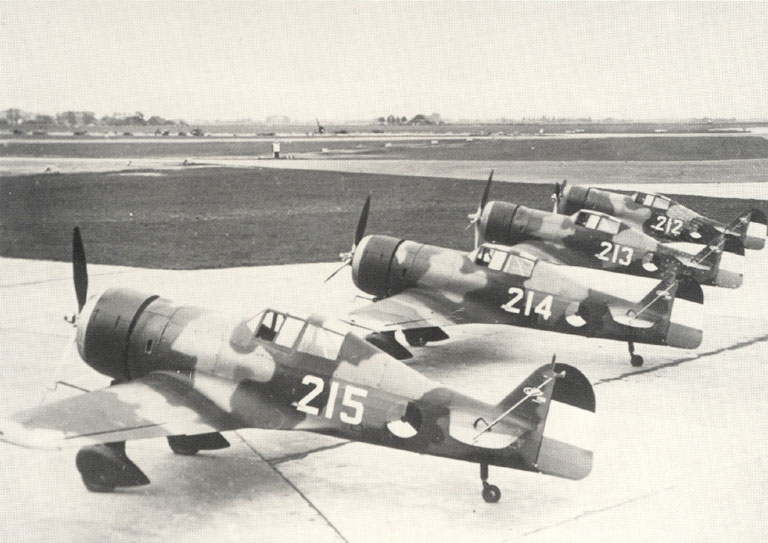
History
The Fokker D.21 saw a bumpy start. Fokker made quite a name for himself during WWI with types like the D.VII, DR.I and E.III. Some of the best fighters around that dominated the skies above the trenches. After WWI Anthony Fokker left Schwerin, Germany and came back to the Netherlands. With the help of his family and a Coalmine Trading Company he re-started his Fokker company in 1919. His name was blemished through his work during WWI, but by focussing his efforts on civil aviation he managed to crawl back up. After rising to fame (in the Netherlands and America!) with the Fokker F.VII passenger plane he quickly tumbled down after one of his planes crashed, killing a famous football coach.
Back to the fighter planes… As we all know, Fokker made quite a name for himself through the development of some rather groundbreaking designs. He wasn’t a great designer himself per se, but his clever business instinct made him good at attracting the right designers and spotting opportunities. But in the years after WWI Fokker struggled to find a market for his designs. Fokker believed in the potential of the mono wing design. He experimented with the Fokker D.14. A low-wing fighter that can be marked as the precursor of the D.21. He actually sold a number of these planes to Germany, which is remarkable, since Germany was not allowed an air force after WWI. These German planes trained pilots on Russian soil in order to keep things ‘secret’. The crashing of one of these planes, threw Fokker back to experimenting with biplane designs.
In 1934 the dutch indies army requested a new one-engined fighter. It had to have a fixed gear (to keep maintenance to a minimum) and be able to reach a speed of 410 km/hour. In 1934 aircraft design already saw all metal tube-less construction. Some of which were already in use in the dutch army (think of the Dornier Wal flying boat). Despite this, Fokker and the government preferred the older mixed construction. A tubular welded frame, covered with metal plating and other materials (fabric and wood). The reasons behind this are simple:
- this method of construction made alterations in the design fairly simple
- it also kept the use of large moulds and machinery to a minimum
- and this made it easier for other countries to build the plane in license!
- and last but not least, this type of construction made maintenance easier. Which was an important factor for the use in the colonies.
Actually this type of construction was equal for the Hawker Hurricane.
Other requirements included movable wing mounted guns! They should be able to sweep 10 degrees to the left and right. Quite a strange demand, since WWI proved the best way to line your target up, was to aim the nose of the plane. Fortunately this demand was dropped during the design stages. Numerous designs were proposed. Bi-plane, mono plane, inline engine, radial engine, open canopy, closed canopy, single-seater, twin-seater… The prototype that was eventually built in 1936 looked almost like it eventually did when going into production. It only featured a smaller rudder, a two bladed propeller and the wheel covers were left off. It did already have the 830 HP air-cooled Bristol Mercury engine, which gave the plane a round and wide fuselage. A common result of a radial engine design. With a length of 8 meters and a span of 11 meters, it looked quite stubby and ungainly. Numerous test flights followed, resulting a a lot of small design changes. Including a larger rudder (to enhance handling when in spin) and different cockpit lay-out, spurred on by a French stunt pilot who worked for the French government.
When the thread of war in the colonies rising and Japanese navy becoming a thread, the need for bombers became big, and the need for fighters smaller… This almost resulted in the cancellation of the order! Another bullet the D.21 dodged was when dutch competition (Koolhoven) announced a ground breaking mid engine super fast fighter. A lot of spin-doctoring, design alterations and politics was needed to address this problem, and in the end it worked…
In the end a total of 148 (some say 147) were built and used by the Netherlands, Denmark, Finland, Spain and Germany.
Surviving Examples
None. The closest you can get to a real dutch Fokker D.21, is visiting the new erected Nationaal Militair Museum (NMM in Soesterberg, Netherlands) where they have a very nice replica. Sadly in the new museum setup it is suspended from the ceiling in a rather dark gloomy room, which makes it difficult to photograph. It contains a lot of original D.21 parts, but sadly has the wrong legs, which are of Finnish design. Also the cockpit is not accurate, but it’s almost impossible to find out exactly what is not accurate, since the sources for this area are scarce… A nice walkaround can be found on the Aircraft Walkaround Center website.
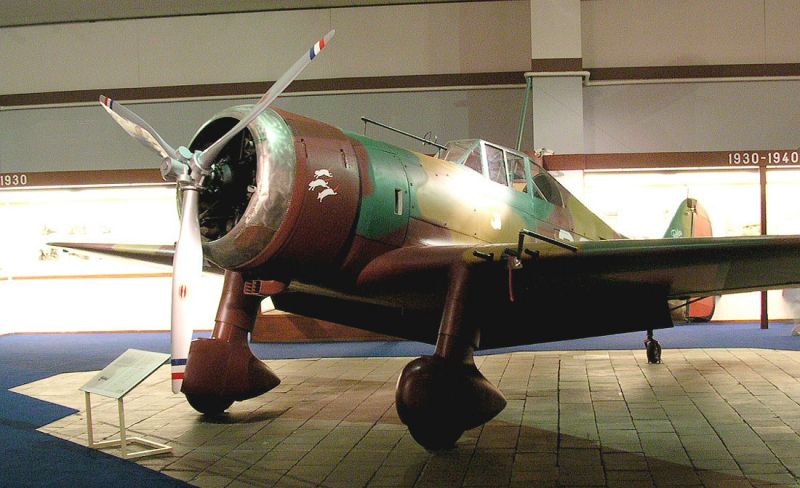
Another interesting piece of history can be found at the Crash 40-45 museum in Aalsmeerderbrug (close to Schiphol). About 8 minutes from my house. During the invasion in may 1940 a D.21 (code number 229) escorted two Fokker T-V bombers. Pilot Koos Roos encountered three Bf 110s. They opened fire and Roos’ D.21 got hit. He decides to bail out and releases his canopy. It flies off and hits one Bf 110 right in the engine. It breaks off with a smoking engine. He decides to stay in his plane and manages to shoot down the second Bf 110 with his FN guns. He hides in the clouds and when he comes out he realises he’s right behind yet another Bf 110, which he also manages to shoot down. In the end he bites it when a last Bf 110 hits his plane. Roos is heavily wounded and becomes unconscious. During the dive of his crashing plane he is thrown out of his cockpit and he regains consciousness during his fall. He survives. Gets decorated and dies in 1956 in a helicopter crash… The remains of his plane were found in 1993 in Nieuwkoop. The engine and large parts of the cockpit were reconstructed in the museum and are the last surviving remains of the dutch D.21.
Here are some photos I took recently:
There is also one D.21 to be seen in the Finnish museum in Tikkakoski, but as you may have guessed that is a Finnish license built example, so not really relevant to this review.
During the war the Germans took one or two D.21s and placed them on display in Berlin, but that got bombed out in 1942, leaving nothing but ashes.
Finally on to the Model!
Silver Wings has been operating in the niche market since 2009. Interbellum bi-planes, mostly in 1/32 scale deserve their focus. Fighters that mostly became obsolete with the outbreak of the war. And even though this last statement doesn’t 100% apply to the D.21, I guess Silver Wings was the most legible company to tackle the subject. Exotic is their trademark. Just look at their Fiat Falco, Siskin or FW44. The quality of their kits is very consistent and very buildable. Even for people with less resin experience under their belt.
As said in the introduction I was hoping they would do the original early dutch D.21, since it gives the modeller the option to build it in German captured colours or with the early dutch triangle or later three colour roundel. Common believe is that the Germans just barged into Holland and encountered no resistance at all, when in fact these little Fokkers gave them quite a fight.
The box is small and displays a new design and Silver Wings’ new logo. A black base which I personally like more than the previous soft yellow and light blue. The first impression you get when opening the top is: Hey! They cleaned up all the resin for me! Almost no large casting blocks to saw off and no flash is present. Since I have their Hawker Hart kit, I was already familiar with this level of quality.
The kit consists of:
- 160 parts cast in resin (including 8 clear resin parts for the canopy and lenses, light covers)
- 40 photo-etch parts
- Film for the instruments
- and decals to build three different schemes
Length & wingspan: 256 x 343 (mm)
Fuselage
The two halves need almost no clean-up. Very restrained surface detail (panel lines) that I might deepen a little in order for the wash to grip on. The insides feature two locating pins that fit snugly in the other half. Dry fitting shows a seamless fit that requires no filler. Detail on the inside of the cockpit halves is present too, but most of the detail will be attached to the fuselage framing. Having seen the artisan way Silver Wings produces the master for this model, this testifies of their craftsmanship. They actually build the whole fuselage from layers of green card and sand that down to shape. Since the wing roots are integral to the fuselage this is quite a feat. If I didn’t know better I’d say this was mastered in 3D software.
Here's a pic of the fuselage during mastering:
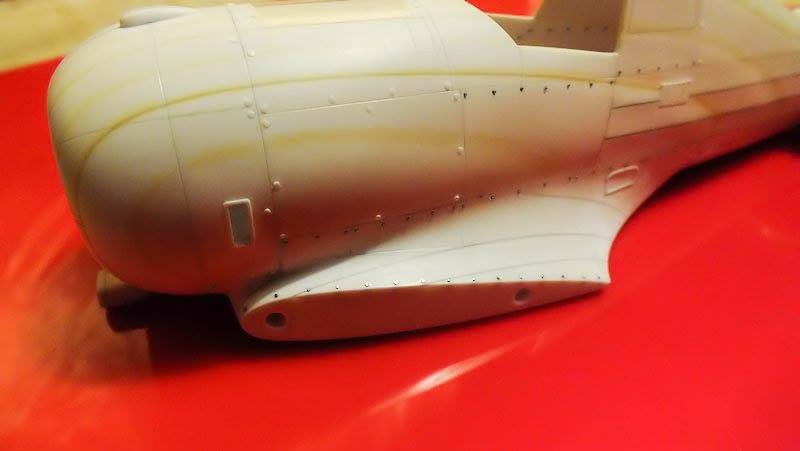
Wings
These are solid and rather heavy. Luckily Silver Wings added steel tubing in them that protrudes a couple of mm to fit in a pre-cast hole in the wing root. A total of 2 resin locating pins and one steel tube make for a proper fit and alignment. The leading edge needs some sanding and clean-up but nothing too much. Ailerons and flaps are separate, so you can pose them up or down. Note: The D.21 flaps had only two positions: fully up, or fully down. The wings have no rivets, because the real D.21 had wings that were covered in fabric and wood. The only fasteners were seen in the gun-bay hatches and along the wing root, that was covered in Duraluminium. If you look at wartime photos (especially that of a crashed No. 229 you’ll see some nice paint-chipping. Aluminium dope appears beneath the paint, which is not strange, since this was often used to protect the fabric/wooden underlayer from UV-radiation.
Just take a look at this crashed (well bad landing) of serial number 229:
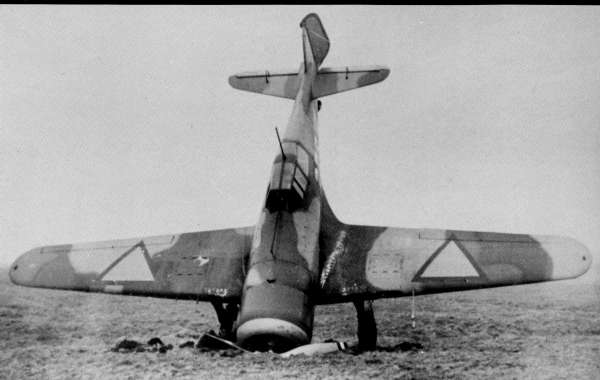
Ailerons, Flaps, Tail
As with the main wings the tail planes feature locating pins that line up nicely. The elevators have restrained texture and should look convincing under some paint. The flaps are made up from large resin planes. As said in the introduction: the Fokker D21 only had 2 flap positions: all the way up, or all down. The rudder comes as one separate piece. All these parts show no flaws and need almost no cleanup. A dry-fit shows a good line-up and fit.
Fuselage Framing and Prop Blades
Two large side frames make up the base for the cockpit. This is always a bit of a tedious choir. Again: cleanup is hardly necessary. Just make sure to line all the parts up and measure twice before using any glue. The amount of parts that make up the frame construction is limited, so you should be fine. The framing carries the foot boards, radio, seat, oil tank and instrument panel.
The prop blades are elegant and sleek. These were all metal. My recent visit to the museum showed the tri-colored striping on the edges to be only on the outside (front side). So check your references.
Clear Parts
With resin kits there’s always a challenge in tackling the canopy. What’s the best way to go? Vac? Clear resin? Vac can be difficult to deal with. It's fragile and can be difficult to glue since there’s hardly any mating surface. Resin is often too thick and can have imperfections. In this case we have clear resin. No imperfections and the thickness is not too bad. Four parts make up the cockpit glazing. Windshield. Rear. And to middle sections, of which the left sides can be posed in the open position. Also in this bag are two landing light lenses and lense covers.
Engine Cowling
The front cowling ring and rear cowling come separate and fit nice into each other. These two parts are cast really thin, which makes me believe the Bristol Mercury VIII engine is made to size J. Fellow member Cees recently arranged a spring for one of the rocker arms of a Bristol Mercury cylinder head for me. A nice addition to my build. This has nothing to do with the review at hand of course…
Landing Gear, Engine Base, Cockpit Parts
This bag contains all the parts needed for the main fixed gear. The streamlined wheel housing has locating lugs and lugs that hold the wheel. The shape of the gear is typical for the early DXXI-2 dutch version, and as I said before, I’m glad Silver Wings looked beyond the existing dutch replica, which has the wrong shape Finnish gear. Also included in this bag is the cockpit floor and radio. Make sure to check whether your D21 carried one! Since only 1 out of 3 carried a radio, since they flew in sorties of 3 planes. Signals from the radio plane to the two wingmen was done through hand signals.
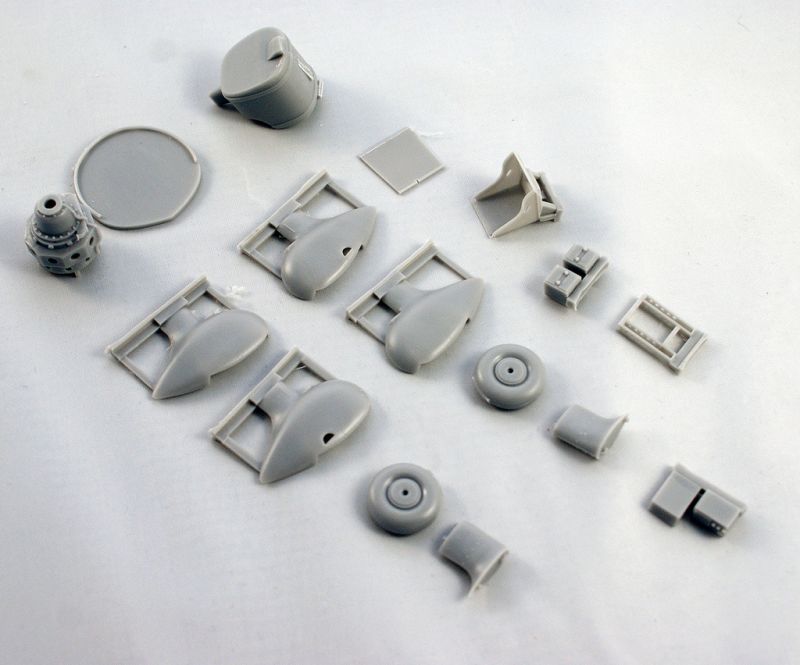
Engine Cylinders
A total of 9, well cast and detailed. Just a little cleanup needed to made the cooling ribs run smooth all the way around.
Small Bits and Bobs
And then we have one small bag with a few recognizable parts. Rear wheel. Prop shaft. Oil cooler intake. Exhausts. Etc… One part in particular deserves praise, which is the intake. Just look at the way it almost seems completely hollow! Really cool…
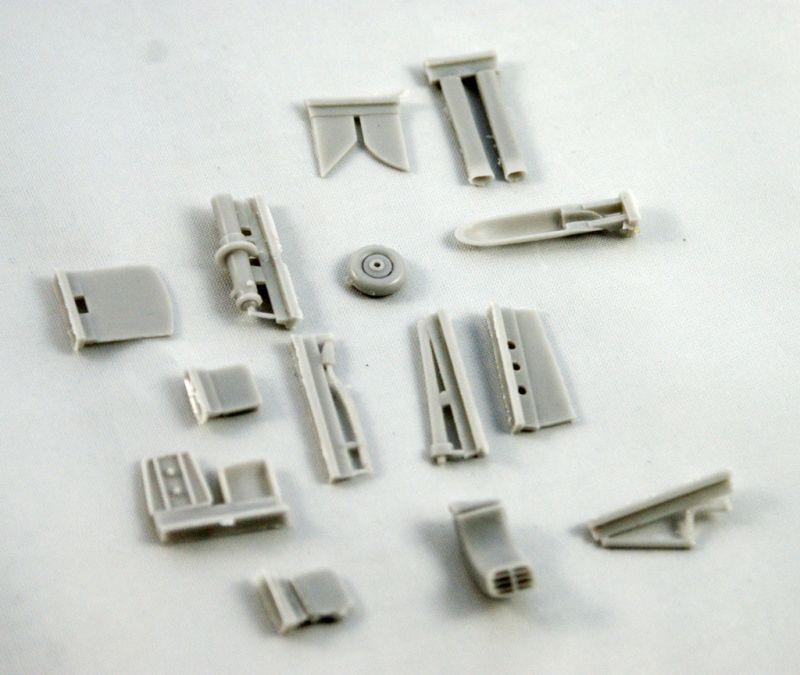
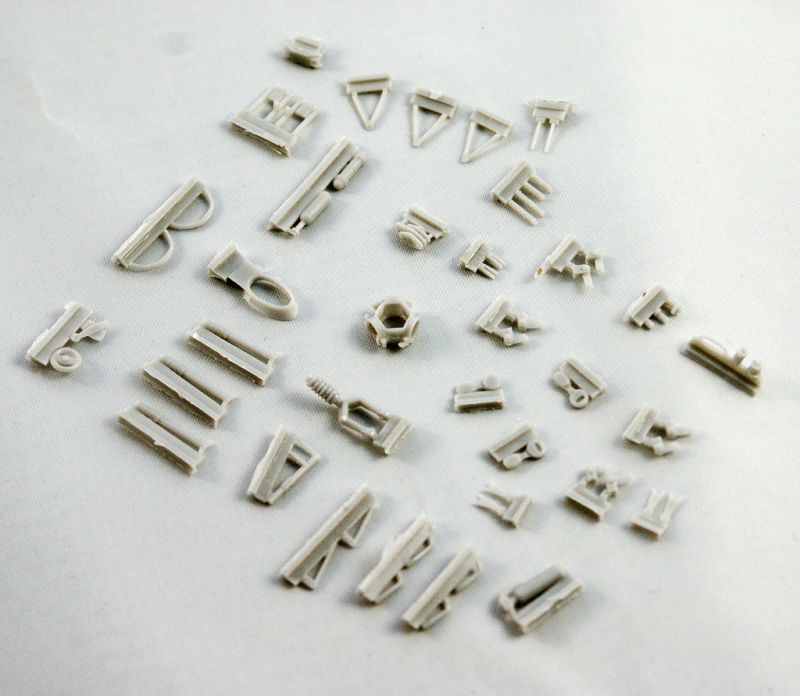
Photo-etch Fret
Here we have the instrument panel, seatbelts, gunsight parts, flap details and footsteps. Information on the D21’s cockpit/instrument panel is scarce. There is one nice detailed photo of the prototype, but the layout was altered for the production machine. A dutch guy named Daan Kaasjager studied the D21’s cockpit in order to make a virtual one for Microsoft’s Flight Simulator. I collected some images of his work since I believe he did an accurate job. Along with the photo etch you’ll find the typical piece of film that makes the instruments. Detail here is as sharp and minute as you can find in the hobby. Don’t forget to paint the read of the instrument facings white in order for the detail to show. The seatbelts are nicely done but I always prefer HGW paper/fabric because of the way they can be wrinkled. I just need to check which come close enough in shape because I’m pretty sure these haven’t been done (yet). Bare in mind this is just my personal preference.
Daan Kaasjager's Virtual Cockpit
Instruction Booklet
In just a few steps the whole models comes together. The booklet sure makes it look simple! I especially like the full color profiles with all side views (and the fact I am thanked on the first page!).
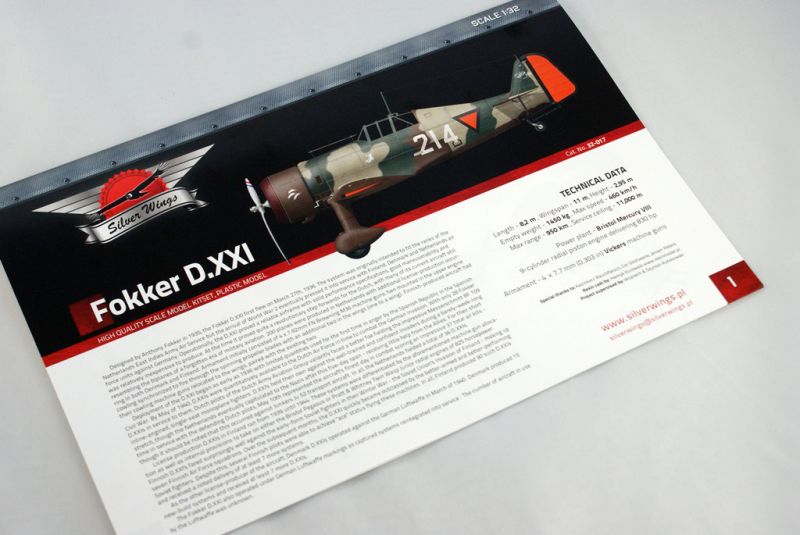
Schemes & Decals
Decals are provided for three different schemes. Two Dutch and one captured German:
- Fokker D.XXI “214" - Dutch Air Force - 1-II-1 LvR (1e JaVa), De Kooy, Autumn 1938
- Fokker D.XXI “212" – Dutch Air Force - 1–V-2 LvR (1e JaVa), Ypenburg, Summer 1940
- Fokker D.XXI “15" - Luftwaffe - ex 1e JaVa "Witte Muizen", Summer 1940
You might wonder why one Dutch scheme shows an orange triangle and one shows a red, white and blue roundel with an orange dot in the middle. Actually all dutch planes started out with orange discs until 1921. Then they were replaced with the red, white and blue roundels. After some incidents in 1939 between the Luftwaffe and Dutch air force caused by confusion it was decided to change the roundels for the orange triangle with black trim. After WWII the orange triangle was abandoned again. Another thing you might find confusing is the mixed use of D.XXI and D.21. Both are correct. The D.21 just happened to be built right on the transition between the numeral uses. The official serial plate on the plane however states: D.XXI.
References
The books I have on the subject are by my knowledge the majority that is written on the subject and most complete. There are some older offerings, but these aren’t really worth the trouble.
- The most complete title is by Peter de Jong, published by Violaero.
Fokker D.21, Fokkers last one-engined fighter. It is written in dutch, and has English captions too.
ISBN: 978-90-8616-099-0 - A smaller publishing, dealing with the operational history is written by Frits Gerdessen and Luuk Boerman. Published by Dutch Profile. Fokker D.XXI, History, Camouflage and Markings. A good title to guide you along your build.
- Another title by Peter de Jong is published in France (!) by Lela Presse. This book is older than the Violaero publishing and the only reason it was published in France, is because he wasn’t able to find a dutch publisher interested at that time. Le Fokker D.21, Collection Profils Avions No.9.
ISBN: 2-914017-26-X
Other available decals on the market in 1/32 by Dutch Decal:
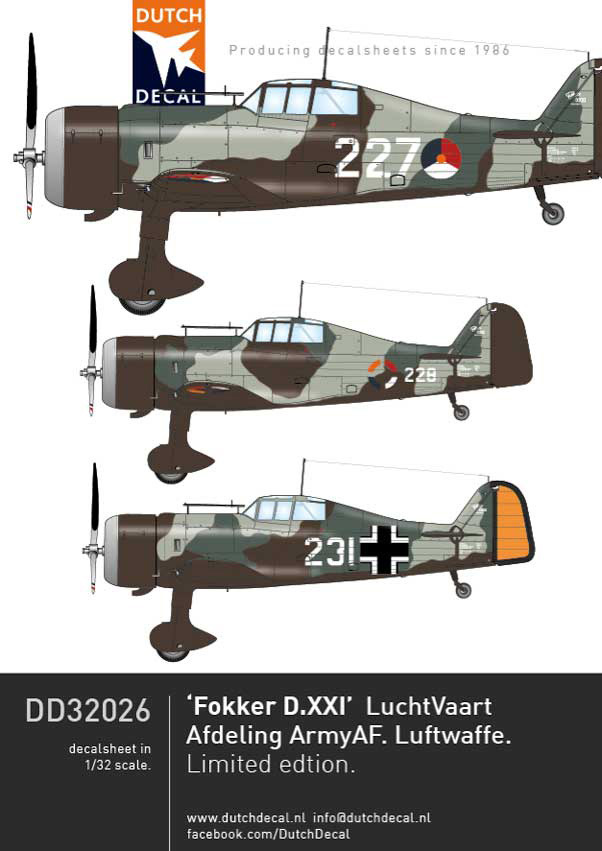
Verdict
All in all this is very well researched kit with a great fit and engineering. Quality control is high. The name of Cor Oostveen and the fact he receives special thanks in the booklet is a good sign as he is an authority on the subject. Shape and detail all appear to be spot on. Mistakes that appear on the only replica in the Netherlands are not simply taken over. The only minor question marks I have are in the cooling jackets of the guns. These have round holes, whereas I believe they were rounded oblong.
Here's a photo posted by LSM member Beychevelle of the real deal:
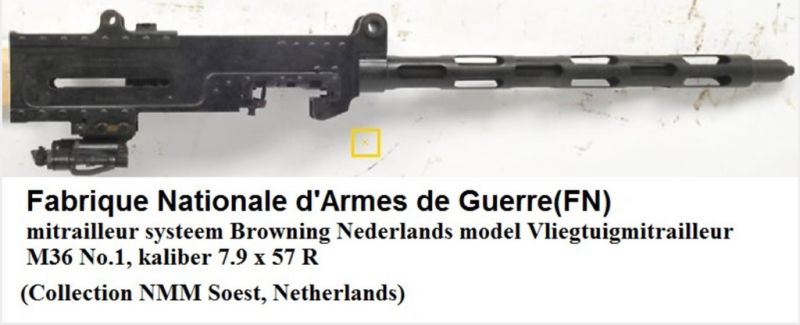
And here are the kit's guns:
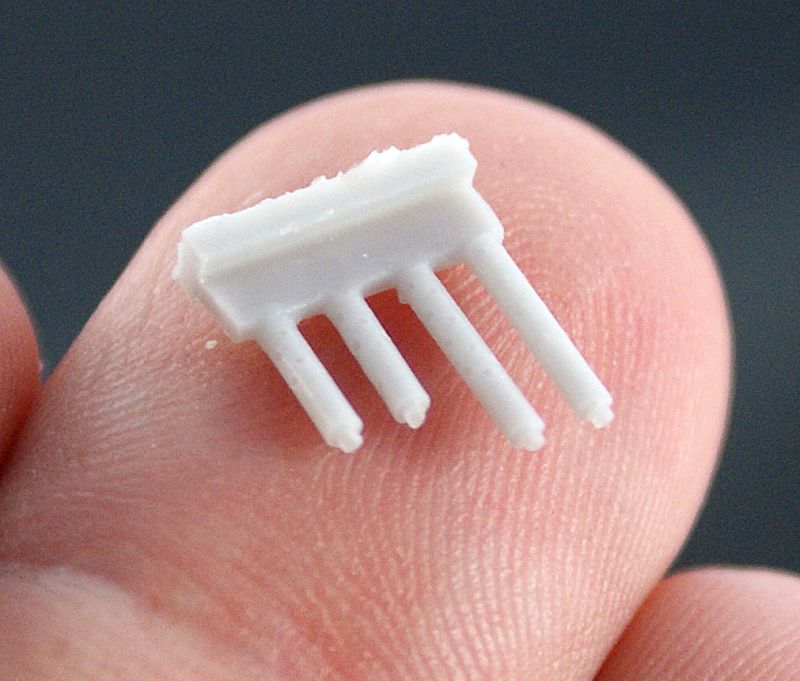
And here's his solution:
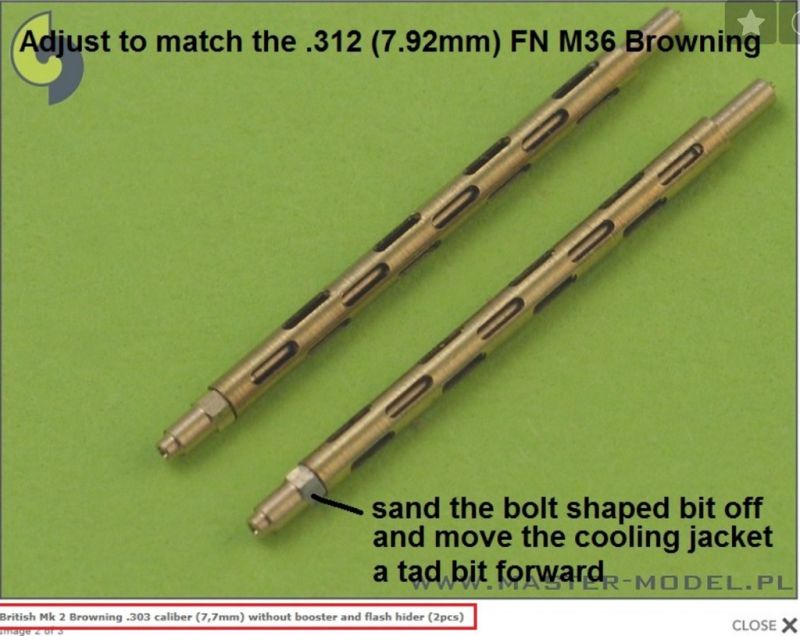
Another question I have is with the shade of orange on the decal sheet. It feels to be al little bit too dark. There are aftermarket 1/32 sheets available by Flevo Decals and Dutch Decals and I will need to get a hold one of those in order to check. Other than these small points it’s a great kit that does justice to this bold little fighter that fought a real Goliath in the first days of the war. I can’t wait to start building…
I would rate this kit a 8.5 out of a 10.
VERY highly recommended if you are into Dutch aviation. VERY highly recommended if you are into exotic subjects.
My sincere thanks to Silver Wings for this review sample and the sheer fact they decided to tackle the subject!
© Jeroen Peters 2015
This review was published on Saturday, May 02 2015; Last modified on Saturday, May 02 2015

